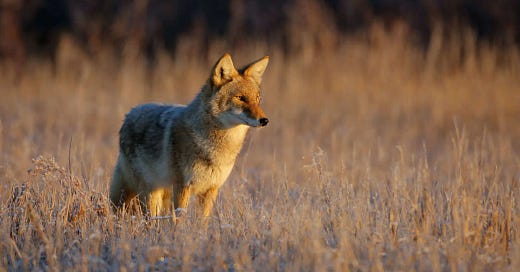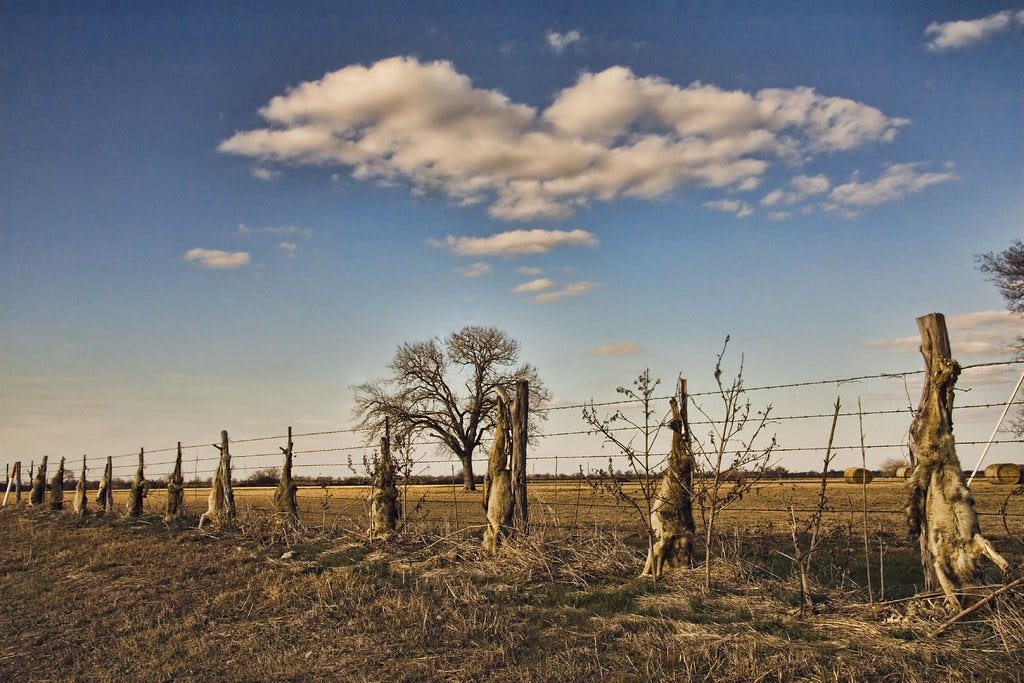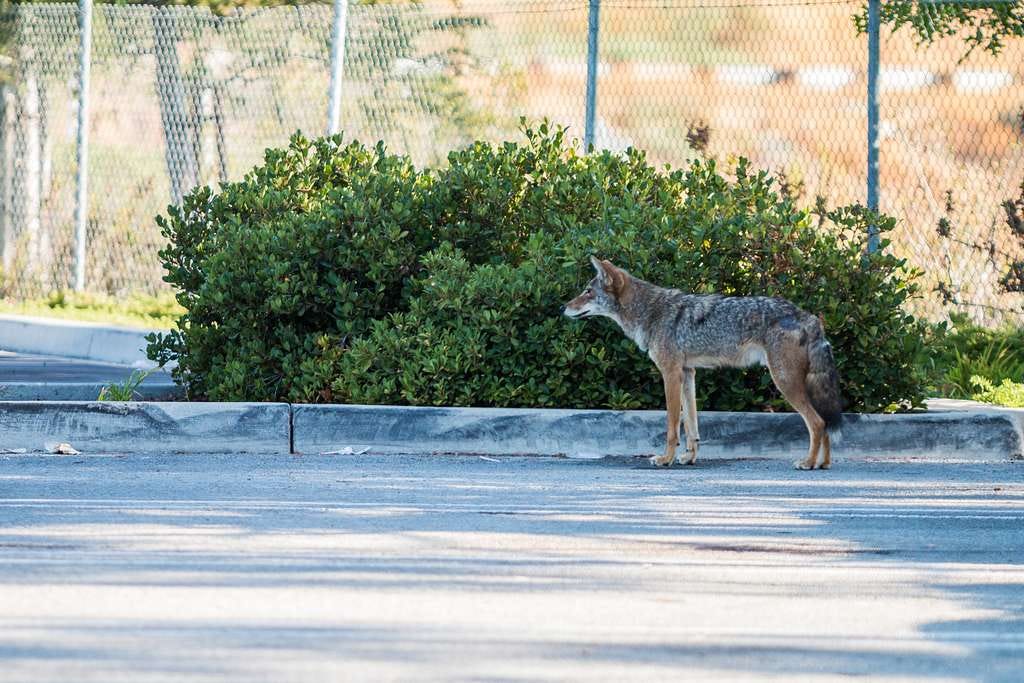Why Coyotes Don't Deserve Their Bad Reputation
The underdog of the natural world, Coyotes are wildly misunderstood
When I was still in high school, a group of friends and I went camping near a lake in Arizona. We had to get up early the following morning, so after setting up the tents and putting out the campfire, we crawled into our homes for the night. The mat I was sleeping on didn’t offer much support, so I was practically sleeping on the ground. It was cold, and after much twisting and turning, I finally fell asleep. I woke up to the sounds of coyotes.
As I blinked away sleep from my eyes, I wasn’t sure what I was hearing. Without realizing it, my heart pounded against my ribcage. A cacophony of howls, barks, yips, and whines sounded like they were just outside my tent, edging closer and surrounding me. It dawned on me that it had to be a group of coyotes. How many? I had no idea. It sounded like 30, but I remember learning that even one or two coyotes can sound like a dozen. In reality, there were probably three or four. We had left one side of the tent zipped open, a thin sheet of mesh being the only thing to block out whatever was outside. I shuffled, repositioning myself so that I was staring out into the darkness, the silver moonlight encasing the outside brush in a soft glow. I didn’t see anything, and eventually, the sounds moved away until they faded into silence once again.
The following morning, one of my friends asked, “Did you guys hear the coyotes?” We all nodded. Although I didn’t see them, their presence was palpable.
A powerful and key figure in Native American mythology, the coyote is a trickster deity that represents both good and evil, balance and chaos. Unpredictable, ambivalent, and daring, coyotes in folklore test the limits of behavior and exhibit harmony and order for tribes such as the Navajo and Hopi in the Southwest. Despite their prominent role in Native American culture, coyotes have been victim to a ruthless war of extermination by ranchers and government agencies since the early 19th century. Between 1947 and 1956, roughly 6.5 million coyotes were exterminated in the American West. Unlike grizzlies and wolves, the federal government’s war on and attempted extermination of predators backfired on coyotes because they quickly adapted to have larger litters and bring more pups into adulthood.
But even today, hundreds of thousands of coyotes are killed every year, and many are shot to death from helicopters and small planes. Sounds rough, right? Yet, despite this, the coyote has survived all attempts at eradication, spreading from its original territory west of the Rockies to the East Coast, finding a safe refuge in cities like Chicago and New York.
Coyotes have been and continue to be villainized in a multitude of ways. From property damage, attacks on other animals (like poultry and pets), and conflicts with humans, it’s not a surprise that many neighborhood residents call for coyotes to be trapped, killed, and banished. The thing is, they were here first. What right do we have to call for the extermination of an animal that is simply adapting to its surroundings? Coyotes, much like any other predators, are only trying to survive, so the responsibility to ensure the safety of pets and livestock is our own. However, it is dangerous when Coyotes lose their wariness toward humans and see them as a source of food, leading to some tough decisions having to be made.
Coyotes have been living in the American Southwest for 5 million years. For at least 20,000 of those years, they co-existed with Native American peoples. Reasonably, urban coyotes pose a larger threat to people and pets than rural ones do. This is due to their lack of fear of humans and unknown obstacles. Urban coyotes have even learned how to cross freeways and dodge cars. In fact, ‘hyper urban’ coyote genomes are actually straying from their original rural coyote counterparts, meaning a widening genetic difference now separates ‘city’ coyotes and their ‘country’ cousins. Surprisingly, researchers also found that city coyotes ' genes weren’t just genetically different from their rural counterparts, but their DNA differed from other city coyotes. Urban coyotes split into three genetically distinct populations.
So, with more and more coyotes adapting to city life, it only makes sense that we take the time to educate ourselves about how we can keep both ourselves and coyotes safe and out of conflict. City coyotes are mostly nocturnal, but if you see one, do not feed it. This is the number one most effective way to prevent coyote attacks in your neighborhood and ensure a safer environment.
Ranchers still think coyotes are a pain in the ass, and neighborhood residents are still worried that their pets will get eaten by one. That’s okay. If you live in an area populated by urban or rural coyotes, make sure to keep your pets inside. Incredibly resilient, adaptable, and nearly impossible to eradicate, Coyotes are here to stay. They are intelligent, cunning, and irresistible icons of the American Southwest.
Here’s a cute video of a coyote and badger meeting up to go hunt together :)







I love coyotes, and was fortunate enough to see a few in the wild. I had no idea though that they adapt so incredibly fast, and the city coyotes are so different from the country coyotes! They are amazing, and considering how much we've been hunting them, lucky that they are so resilient and adaptable. They deserve our respect! Thank you for a great post about them!